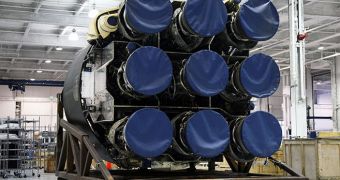Hawthorne, California-based Space Exploration Technologies Corporation (SpaceX) will launch its next rocket into low-Earth orbit on February 7, 2012. The flight was originally scheduled to take place this December, but technical glitches and other delays forced the company to postpone it.
SpaceX is developing the Falcon 9 medium-lift delivery system and the unmanned Dragon space capsule under the guises of the NASA Commercial Orbital Transportation Services (COTS) program.
But receiving support from the American space agency comes with strings attached. The company has stringent milestones to achieve at relatively short intervals, in order to qualify for further NASA money.
The program calls for the second COTS demonstration flight to be conducted as soon as possible. Originally, this was supposed to happen sometime at the end of this year. SpaceX CEO announced a couple of months ago that this is unlikely to happen, saying that January 2012 is a more realistic target.
Now, NASA announces that February 7 is the current launch target for the second COTS flight. The Falcon 9/Dragon combo flew successfully in December 2010, making SpaceX a part of a very select group of organizations capable of putting robotic capsules in orbit, and retrieving them safely.
What is very interesting about this new flight is that NASA agreed to allow SpaceX to try and have its Dragon spacecraft rendezvous with the International Space Station. This is bound to upset the Russians, which have repeatedly stated that they will not allow this to happen.
While SpaceX and NASA want to reduce America's downtime in orbital capabilities, the Russian Federal Space Agency (RosCosmos) argues that the Dragon has had insufficient flight experience to be allowed near the $100 billion ISS.
“SpaceX has made incredible progress over the last several months preparing Dragon for its mission to the space station,” explains the NASA Human Exploration and Operations Mission Directorate associate administrator, William Gerstenmaier.
“We look forward to a successful mission, which will open up a new era in commercial cargo delivery for this international orbiting laboratory,” he adds. The official is convinced that the critical work which still remains to be done will be completed by February.
“As with all launches, we will adjust the launch date as needed to gain sufficient understanding of test and analysis results to ensure safety and mission success,” he concludes.

 14 DAY TRIAL //
14 DAY TRIAL //